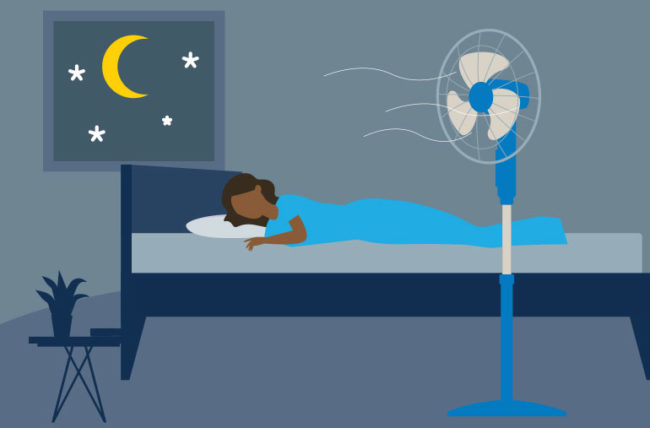All of us imagine the ideal birth process. We can’t anticipate every possible twist and turn. Events can move quickly when you are caught in the middle of labor and delivery. It can be difficult to make decisions on the fly, especially if you’re not sure what to expect.
You can prepare yourself for what lies ahead by making a birthing plan. Birth plans outline your preferences and wishes for what you want to happen during childbirth. Birth plans also detail the types of interventions and techniques that you would like your healthcare team to employ during labor and delivery.
Claire Hamp, CNM and Certified Nurse Midwife, explain how to make a birth plan. It can ensure that you and your healthcare provider are on the same page and why you should be flexible if things don’t go as planned.
What is a Birth Plan?
Birth plans are a summary that outlines your preferences on how to give birth, and what to expect during labor and delivery. These plans will include your preferences regarding pain management, and what you would like to happen after birth for both you and your child.
Your birth plan can be viewed as a guide or map that you would like your healthcare team to use. Your doctor or Midwife will be able to identify your preferences and create a plan that is tailored to your needs.
Hamp says that if you want to discuss your birth plan with your doctor, you should bring it to your appointment. Your provider will be able explain to you what’s already part of his practice, what he can do and what he can’t. They can also tell you what he can do.
These conversations with your healthcare provider are very helpful in educating you and helping to understand when certain things are required. They also help your healthcare provider better understand what you want.
Do you need a birth plan to be successful?
It is important to have a birth plan because it clarifies all the options you may have for your care and interventions in labor and delivery. When unexpected events occur, it is important to follow a different route than the one you had planned.
Your birth plan will outline alternative methods that you are comfortable with, for example, if your pain levels are higher than expected, or if it is necessary to reposition you during delivery. The plan also includes the tools and techniques that you would like your healthcare provider, if necessary, to use. It’s important to create a birthing plan with your doctor and discuss it. You can work as a team with a birth plan. This is why being flexible with your expectations and plans can be incredibly useful.
Hamp says, “I think of birth plans as a summary for what you are thinking about labor.” “I think of all these options like a toolbox. All these options are available to you, and they can support your work. But you do not have to use them. “It’s good to know they exist.”
A birth plan example
Your birth plan can be set up in many different ways, but you should keep it simple and on one page. Your birth plan must also include these sections:
The following is a brief introduction to the topic:
Start with an introduction. Include your name, where you will be giving birth, the name and contact details of your healthcare provider and any medical conditions which should be noted on your chart. You should also include the name and contact details of any doulas you are working with.
You should also include the type of delivery that you plan to use, such as:
- Vaginal delivery.
- Vaginal delivery assisted (using a vacuum or forcesps).
- C-section (cesarean birth).
- Vaginal birth after cesarean (VBAC).
If your team is forced to use an alternate delivery method in the event of a difficult delivery, you should list backup options. In most cases an Episiotomy will not be needed. However, it can sometimes be used if the baby is in distress, or if forceps or vacuums are required to assist with delivery. List the procedures you do not want to have done and discuss your concerns with your healthcare provider. In the event of an emergency, you may also want to note this.
Pain Management
You may want to discuss this section with your doctor. It’s crucial to understand that your decisions about whether to have an unmedicated or medicated birth are important.
Hamp notes that “birth is birth.” “The experience of birth and labor can be similar to why people want to run marathons. Some people want to feel and work through their labor and know they can. “But there is no better way than another.”
There are several options for non-medicated pain relief, including:
- Hydrotherapy using birthing tubs and showers
- Compresses made of warm or cold water.
- Massage.
- Hypnotherapy.
- Breathing Techniques
- Aromatherapy.
- Meditation.
- Exercises that involve squatting bars and balls.
Hamp explains that there are many different labor positions and circuits you can use. Movement can relieve pressure on parts of your body which may be experiencing more pain. “Movement can help reposition the fetus, and open your pelvis differently.”
The following options are available for delivering medicated products:
- Pain medications that are administered intravenously
- Nitrous oxide is also known as laughing gas.
- Epidural.
Hamp says that, “I urge everyone to prepare a plan to cope with the pain of labor and contractions, regardless of whether or not they are considering an epidural. Depending on other things happening in the delivery room, it may take a while to receive an epidural, even if they know they want it and have asked for one.”
Some people may even choose not to have an epidural if they are not tired, but if they get too tired, they will opt for an epidural to rest, and to continue their labor.
Talking with your doctor about the alternatives that you feel comfortable using to manage pain can help you plan for all possible outcomes.
Delivery room preferences
You can have your say on whether or not the delivery room you choose is safe. You have a few options, including:
- What they can and cannot do and who is allowed to be in the room when laboring and delivering.
- Dimming and brightening lights.
- Playing music that motivates or sets the mood.
- Noise level is the general noise level.
- What you wear.
- Use an oil diffuser, or a scented candle.
- Drinking clear liquids.
- Fetal monitoring can be continuous or intermittent.
- Mirrors can be used to watch the birth in real time.
- Bring pillows, blankets and other comfort items with you.
When labor begins at home, but you are at the hospital to deliver, things can slow down. You’re no longer in your familiar, comfortable environment. Hamp notes that you’re in an environment with bright lights, and there are more people and a more sterile atmosphere. “Birth progresses in a calm, relaxed environment. Making sure that your environment is relaxing and calming will help.”
What to include in a planned C section
You can choose to be awake or asleep for a scheduled C-section. Many healthcare providers recommend that you stay awake during the procedure because it is safer and speeds up recovery.
You may not be able hold your child immediately after a C section. You may instead need help from your support group. Many people find it important to have someone bring a camera so they can take a photo of their baby and measure its weight. Skin-to-Skin Contact can still be done, but it could take a while depending on the outcome of the procedure.
What to include in a planned training
Doctors may induce labor using medications or non-medicated methods like a foley bulb. They may need to induce labour if you become too tired or if complications occur. If you are planning an induction, keep in mind the fact that labor can take time.
Hamp advises that bringing comfort items such as a blanket or pillow, and even wearing your own clothes in place of the hospital gown can be very helpful during labor. It’s also helpful to bring a long-lasting phone charger.
After delivery and recovery
There are several options to consider when you and your child are in the first moments following birth.
- You can choose delayed cord clamping.
- Who cuts the umbilical chord?
- What newborn medication is needed, and when it will be delivered. (For example: a hepatitis B vaccine or eye drops).
- When should you bathe your child?
- Feeding preferences (breastfeeding/chestfeeding, formula or both).
- circumcisions are examples of cultural or religious preferences.
- You can store or bank your placenta .
- How to and when to skin-to-skin with your baby.
- What will your baby sleep in?
- Who can hold my baby?
Birth plan template
The internet is flooded with birth plan templates. But the one provided by the American College of Obstetricians and Gynecologists and Gynecologists, covers everything in a printable and downloadable PDF.
Hamp encourages: “If you’re having trouble getting started, I recommend reading books on pregnancy and birthing, talking with loved ones and attending a childbirth class either online or at your local hospital.”
These classes will teach you how to monitor yourself and your baby and what medication may be required.






















